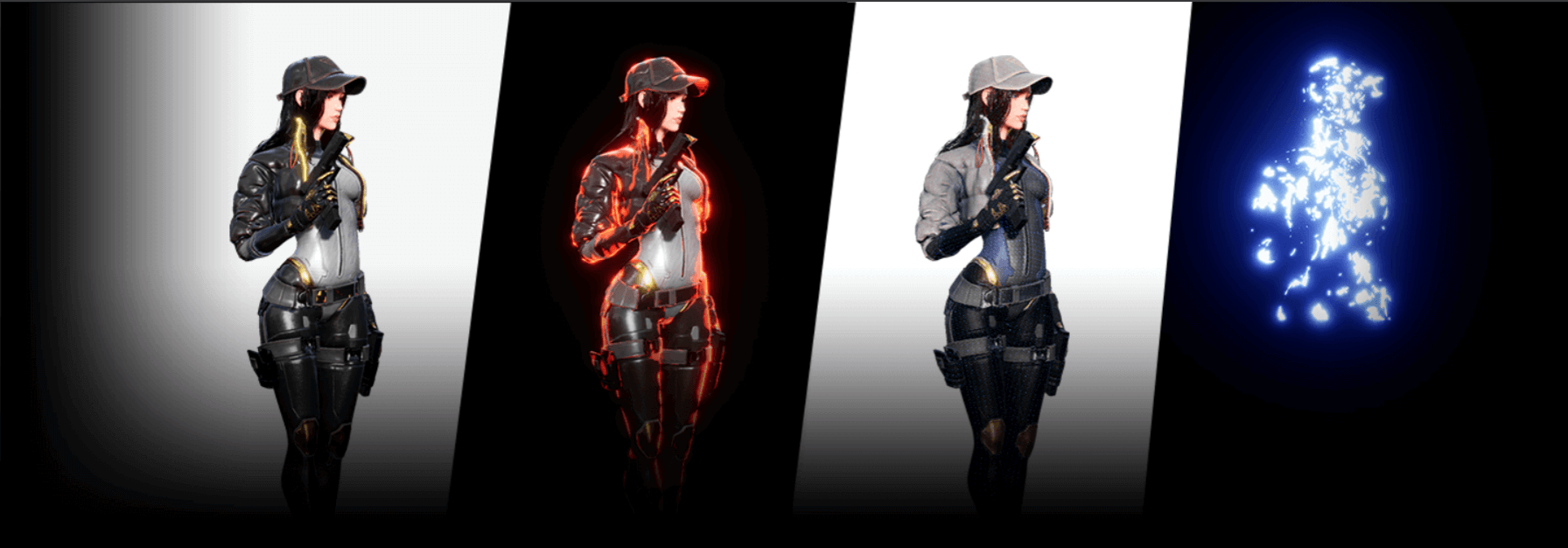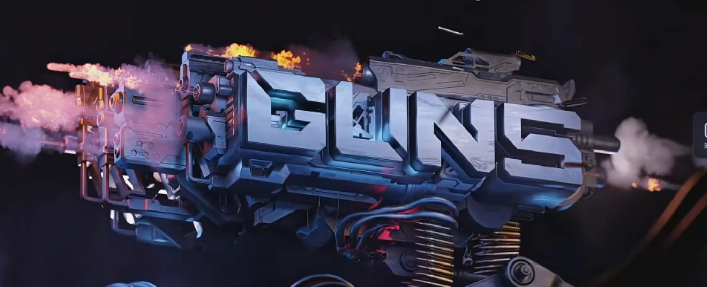
01. Orientation
Instructor Introduction
Class Introduction and Objectives
01. 方向
导师介绍
课程介绍及目标
02. Explanation of Game Engines and Installation
Engine Installation
What Is a Game Engine?
Why This Class Is Essential for Practical Work
Job-Ready Knowledge
Resources and Shaders
System Requirements for Using Unreal Engine
02. 游戏引擎说明及安装
发动机安装
什么是游戏引擎?
为什么这门课对于实践工作至关重要
就业准备知识
资源和着色器
使用虚幻引擎的系统要求
03. Characteristics of Unreal Engine and Unity
Understanding Shaders
Mobile-Specific Features
Differences Between Unreal Engine and Unity
Key Features of Unreal Engine
03.虚幻引擎与Unity的特点
理解着色器
移动特定功能
Unreal Engine 与 Unity 之间的差异
虚幻引擎的主要功能
04. Shaders and Technical Artists
About Shader Work and Employment
If You Aspire to Be a Technical Artist
The Role of a Technical Artist
About Shader Applications
04.着色器和技术艺术家
关于着色器的工作和使用
如果你想成为一名技术艺术家
技术艺术家的角色
关于着色器应用程序
05. Basics and Interface of Unreal Engine
Learning Execution and Basic Operations
UI Overview Focused on Professional Applicability
Menu Items Commonly Used in Different Job Roles in Professional Settings
Additional Useful Features and Options
05.虚幻引擎基础与界面
学习执行和基本操作
注重专业适用性的 UI 概览
专业环境中不同工作角色常用的菜单项
其他实用功能和选项
06. Installing External Resources and Environment Overview
Installing Sample Resources and Levels
Importing Resources
Examining Various Environmental Elements
The Role of Shaders Used in Levels
Background Resource Structures
06. 安装外部资源和环境概述
安装示例资源和级别
导入资源
检查各种环境因素
着色器在关卡中的作用
背景资源结构
07. Description of File Properties and Modeling Tools
File Types and Features
Methods and Explanation for Extracting FBX
Unreal Engine Import Methods and Explanation
Similarities between 3ds Max and Unreal Engine Terminology
Mesh Characteristics and Differences
07. 文件属性和建模工具说明
文件类型和功能
提取 FBX 的方法和说明
虚幻引擎导入方法及说明
3ds Max 与虚幻引擎术语之间的相似之处
网格特性和差异
08. Characteristics of Resources and Engine Application
Content and File Management
Examining Characteristics through Sample Resources
Folders, Naming, and Version Control
About Redirectors
Differences from Unity’s Resource Structure
Resource Structure Explanation
Understanding Texture Uses and Channels
08. 资源特点及引擎应用
内容和文件管理
通过样本资源检查特征
文件夹、命名和版本控制
关于重定向器
与 Unity 资源结构的差异
资源结构说明
了解纹理用途和通道
SECTION 02. Resource and Rendering
第 02 节 资源和渲染
09. Understanding Shader Principles
Understanding Shader Structure
Enhancing Basic Understanding of PBR (Physically Based Rendering)
Interactions and Roles of Light and Material
09.理解着色器原理
理解着色器结构
增强对 PBR(基于物理的渲染)的基本理解
光与材料的相互作用和作用
10. Unreal Engine Rendering Pipeline
In-Depth Exploration of Unreal Engine Rendering Pipeline 1
In-Depth Exploration of Unreal Engine Rendering Pipeline 2
In-Depth Exploration of Unreal Engine Rendering Pipeline 3
10.虚幻引擎渲染管道
深入探究虚幻引擎渲染管线1
深入探究虚幻引擎渲染管线 2
深入探索虚幻引擎渲染管线 3
11. Principles and Features of 3D Resources
Types of Meshes and Matrix Operations
Learning Types and Uses of Textures
Utilization of Mask Maps and Vertex Colors
11. 3D资源的原理和特点
网格类型和矩阵运算
学习纹理的类型和用途
遮罩贴图和顶点颜色的利用
12. Structure of Characters and Unreal Engine Shaders, and Translucency
Attributes of Player Characters
Attributes of NPCs and Monsters
Attributes of Bosses
Understanding Material Production Management
Practical Uses of Opaque and Transparent Materials
12. 角色结构和虚幻引擎着色器以及半透明度
玩家角色的属性
NPC 和怪物的属性
Boss 属性
了解物料生产管理
不透明和透明材料的实际用途
SECTION 03. Shader
第 03 节 着色器
13. Explanation of Unreal Engine Materials and Shader Features
About Material Statistics and Shader Complexity
Understanding Draw Calls
Registering Basic Textures in Materials
Material Parameter Creation
Differences between HLSL Code and Nodes
13.虚幻引擎材质和着色器功能说明
关于材质统计和着色器复杂性
理解 Draw Call
在材质中注册基本纹理
材质参数创建
HLSL 代码和节点之间的差异
14. Basic Understanding of Materials and Shader Creation
Texture Connections and Material Attributes
Understanding Metals, Non-metals, and Fresnel
Material-Related Cautions and Various Offsets
14. 对材质和着色器创建的基本理解
纹理连接和材质属性
了解金属、非金属和菲涅尔
与材料相关的注意事项和各种补偿
15. Examining Material Details
Material Domains
Shading Models
Transparency and Other Options
15. 检查材料细节
材料域
着色模型
透明度和其他选择
16. Basic Formula Usage
About the Most Frequently Used Formulas
About Interpolation
Characteristics of Functions by Type: UV, Math, Vectors, Etc.
Understanding and Applying Normals
Understanding Various Formulas for Applications
Pros and Cons of Code and Nodes, Additional Explanation
16. 基本公式用法
关于最常用的公式
关于插值
函数类型特点:UV、数学、向量等。
理解和应用法线
理解各种应用公式
代码和节点的优缺点,附加说明
17. Completion of Basic Material and Sample Character Application
Defining Basic and Advanced Techniques
Creation of Universal Basic Shaders
Direction of PBR
Cautions When Using Textures
Effects and Types Based on Parameter Changes
17. 完成基础素材及样例角色应用
定义基本和高级技术
创建通用基本着色器
PBR 的方向
使用纹理时的注意事项
基于参数变化的效果和类型
18. Concept and Application of Parenting – Use of Instances and References
Methods for Extending Special Effects
Features Often Used in Professional Settings
Expanding Basic Types Using Existing Formulas
Parenting Management Techniques
Features and Precautions of Instances
18. 育儿概念与应用 – 实例与参考的使用
扩展特效的方法
专业环境中经常使用的功能
使用现有公式扩展基本类型
育儿管理技巧
实例特点及注意事项
19. Material Functions and Shader Modularization
Material Functions and Structure
Modularization of Basic Shaders
Examples of Module Applications
Shader Management Methods
19. 材质函数和着色器模块化
材料功能与结构
基本着色器的模块化
模块应用示例
着色器管理方法
20. Application and Feature Expansion of Existing Materials
Examining Post-processing
Techniques That Make a Difference in Materials
Hands-on Features and Principles of Material Representation
Special Material Creation
Shader Modularization
20. 现有材料的应用及功能扩展
检查后期处理
改变材料的技术
材料表现的实践特点和原则
特殊材料创作
着色器模块化
21. Techniques for Creating Advanced Material Shaders
Utilizing Depth Information
Creation of Water Visual Effects
Creation of Decal Visuals
Techniques That Can Be Applied, Understood, and Learned in Professional Settings
21. 创建高级材质着色器的技术
利用深度信息
水的视觉效果创作
贴花视觉效果的创建
可以在专业环境中应用、理解和学习的技术
22. Improving Sample Modeling Quality Through Shaders
Utilizing Vertex Color Masks
Application of Noise Textures
Expression of Weathering
Application of Rusted Bronze Expression
22. 通过着色器提高样本建模质量
利用顶点颜色蒙版
噪声纹理的应用
风化表现
锈铜表现的应用
SECTION 04. Advanced Applications
第 04 节 高级应用
23. Analysis of Unreal Engine Sample Scenes and Application of Shader Effects
Shader Analysis of Sample Scenes
Alternate Methods for Creating Shaders
About Terrain Expression
23.虚幻引擎示例场景解析及Shader效果应用
示例场景的着色器分析
创建着色器的替代方法
关于地形表达
24. Creating Character Variations
Study of Variation Structures
Creating Mask Textures
Utilizing Vertex Colors
Creating Variations Using Shaders
24. 创建角色变化
变分结构研究
创建蒙版纹理
利用顶点颜色
使用着色器创建变体
25. Character Direction and FX 1
Effect Creation Using Existing Functions
Creation of FX
Application of Texture Blending Effects
SECTION 05. Additional Topics
25. 角色指导和 FX 1
使用现有函数创建效果
FX 创作
纹理混合效果的应用
第 05 节 其他主题
26. Character Direction and FX 2
Creation of Miscellaneous State Effects
Creation of Teleport Effects
Utilization of Material Parameter Collections
26. 角色指导和 FX 2
创造各种状态效果
创造传送效果
材料参数集合的利用
27. Unreal Engine 5 Tech Demo Experience
Experience an Unreal Engine 5 Tech Demo
Application to Exercise Material 5
27.虚幻引擎5技术演示体验
体验虚幻引擎 5 技术演示
应用于练习材料 5
28. The Future and Technical Artistry of 3D Artists
Mobile Specifics and Optimization Tips
Portfolio and Points for Adapting to Professional Work
Vision and Projections for 3D Artists
Skills and Directions That 3D or New Artists Should Have in the Absence of a Technical Artist
Current Value and the Future of Technical Artists
28. 3D艺术家的未来和技术艺术性
移动细节和优化技巧
作品集和专业工作适应要点
3D 艺术家的视觉与投影
在没有技术艺术家的情况下,3D 艺术家或新艺术家应该具备的技能和方向
技术艺术家的当前价值和未来
最后更新时间 4 月 by 毒奶粉









